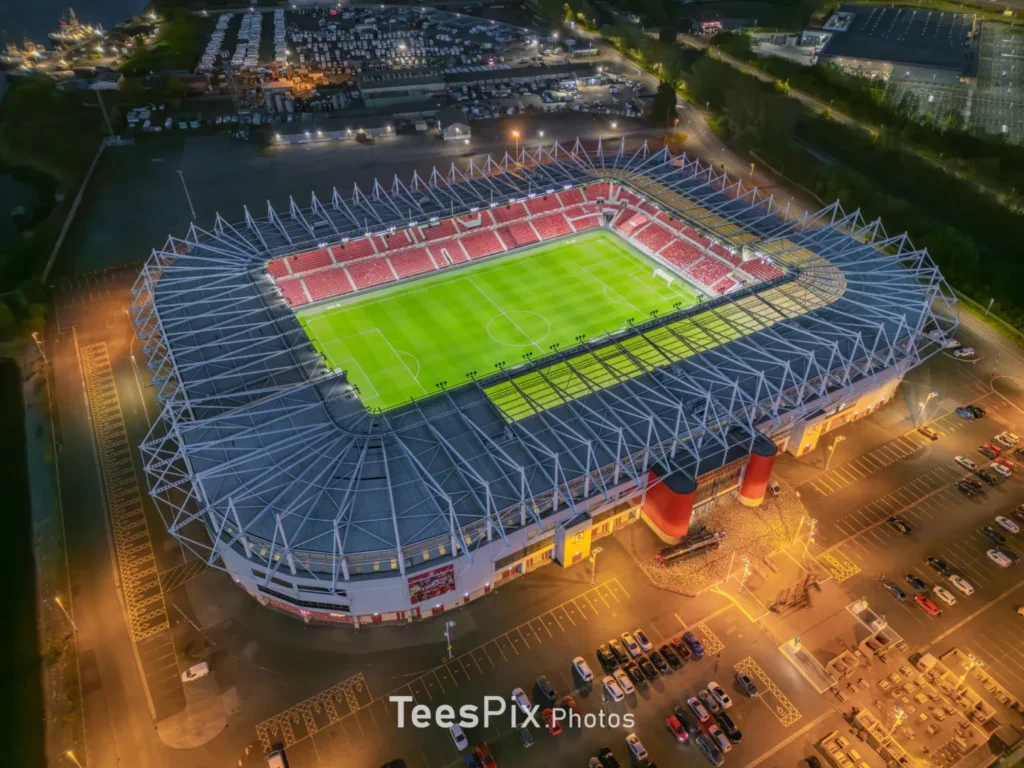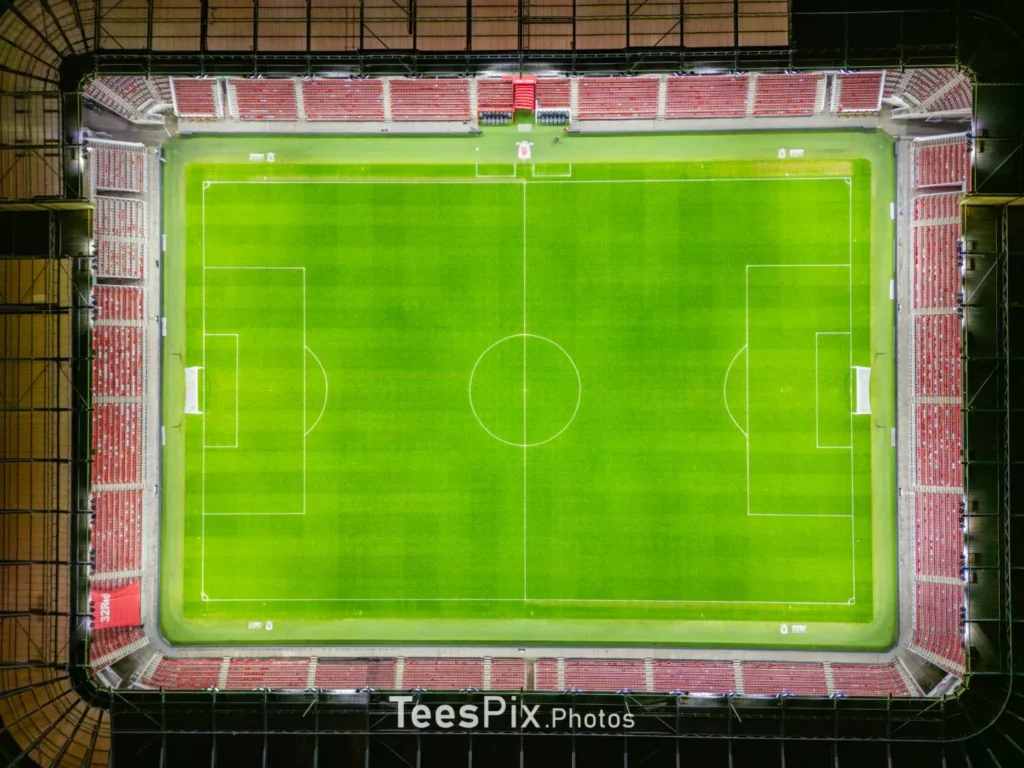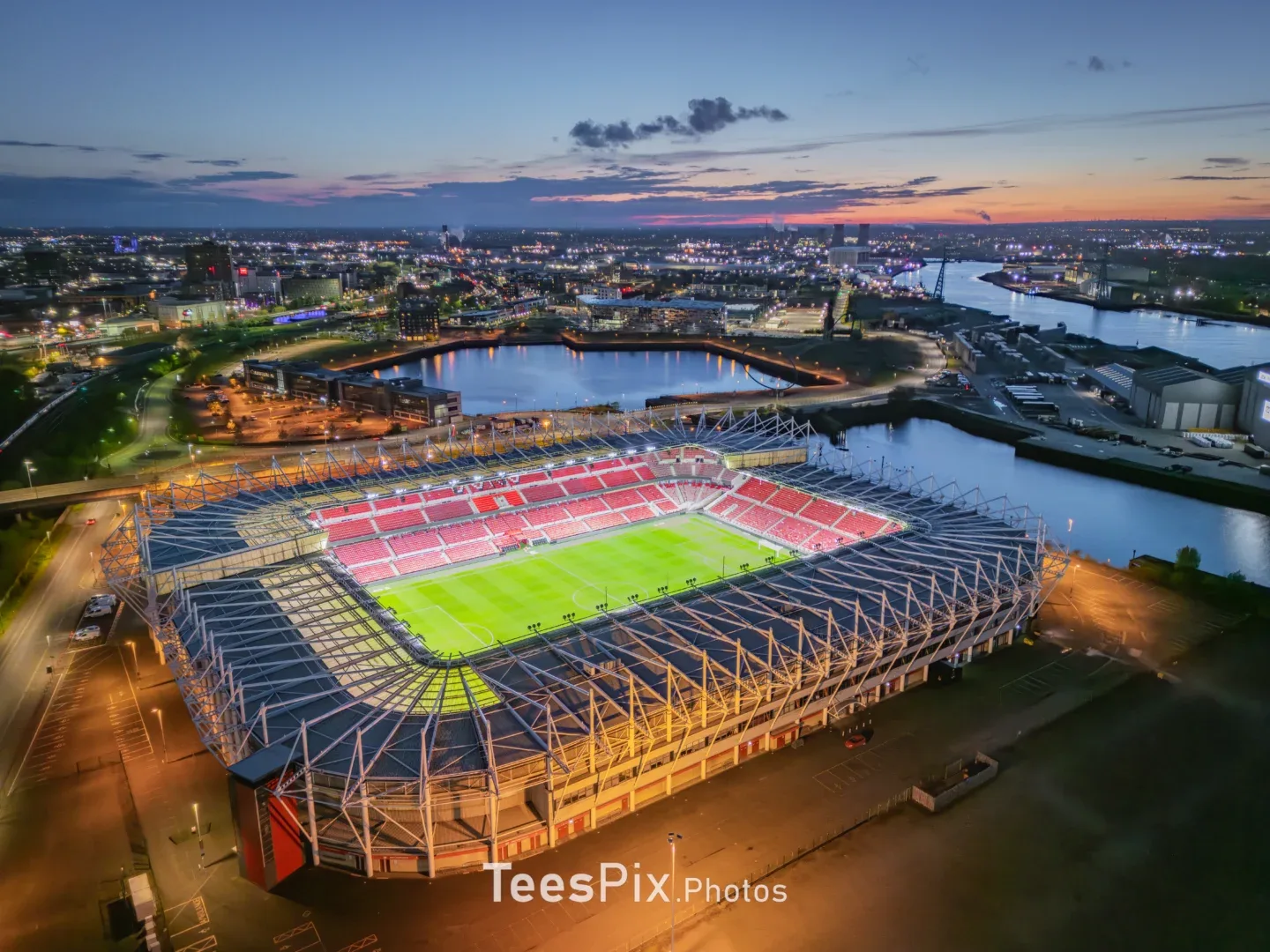The Riverside Stadium, home to Middlesbrough Football Club since 1995, stands as a testament to the town’s evolving identity. Its floodlit pitch and modern architecture offer a nighttime spectacle, a symbol of regeneration within the former heart of Middlesbrough’s docks, now known as Middlehaven.

The Riverside Stadium was constructed to replace the club’s former ground, Ayresome Park, following the 1990 Taylor Report which mandated all-seater stadiums for top-flight football. Construction began in 1994 and was completed in under a year, with an initial capacity of 30,000, later expanded to its current 34,742.

The stadium’s location on the banks of the River Tees reflects Middlesbrough’s industrial heritage, while its surroundings highlight the area’s transformation. Notable landmarks include Temenos, a striking public art sculpture, as well as Middlesbrough Dock and the CIAC building. Middlesbrough College’s campus further underscores the revitalisation of the area and its focus on education and innovation.

